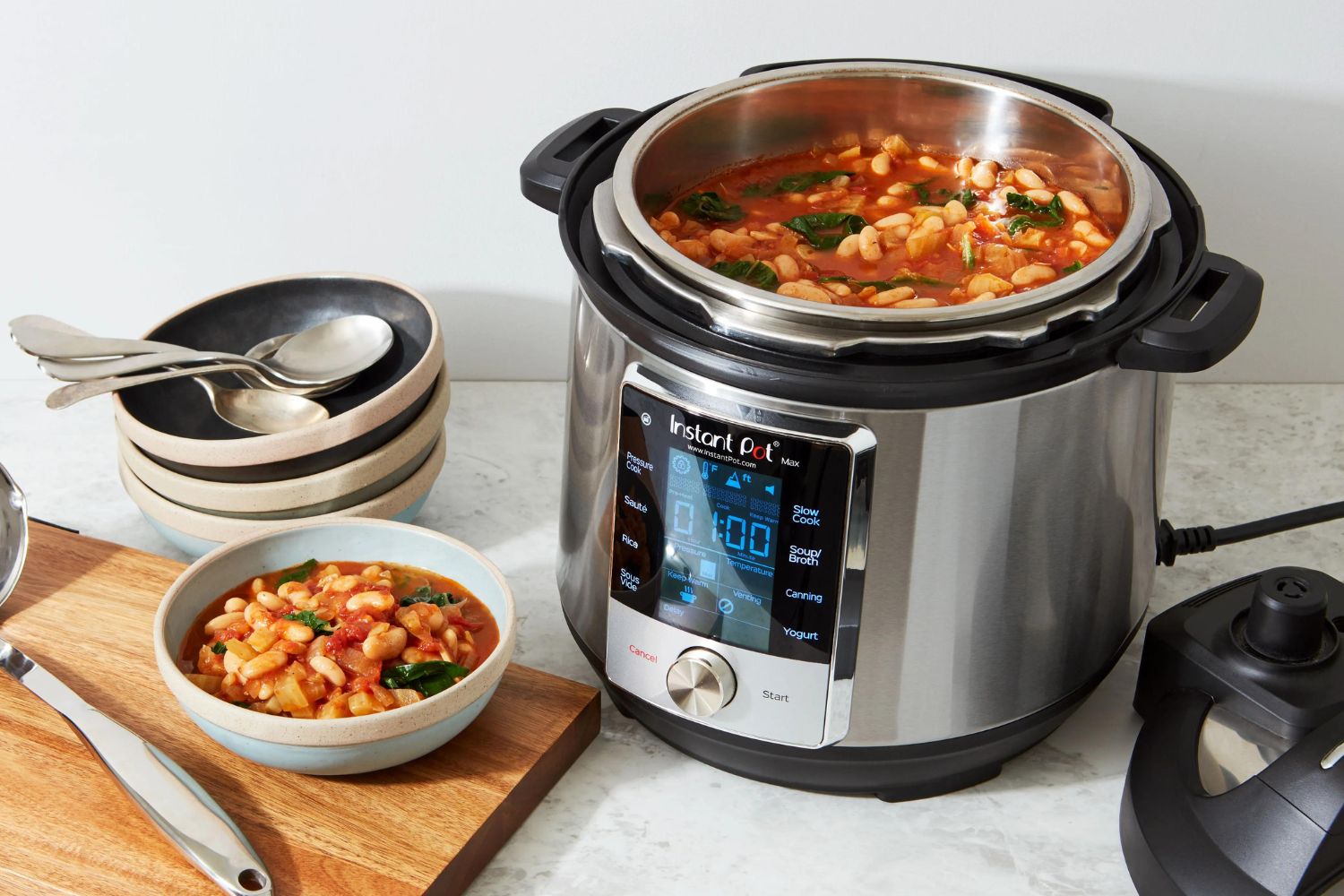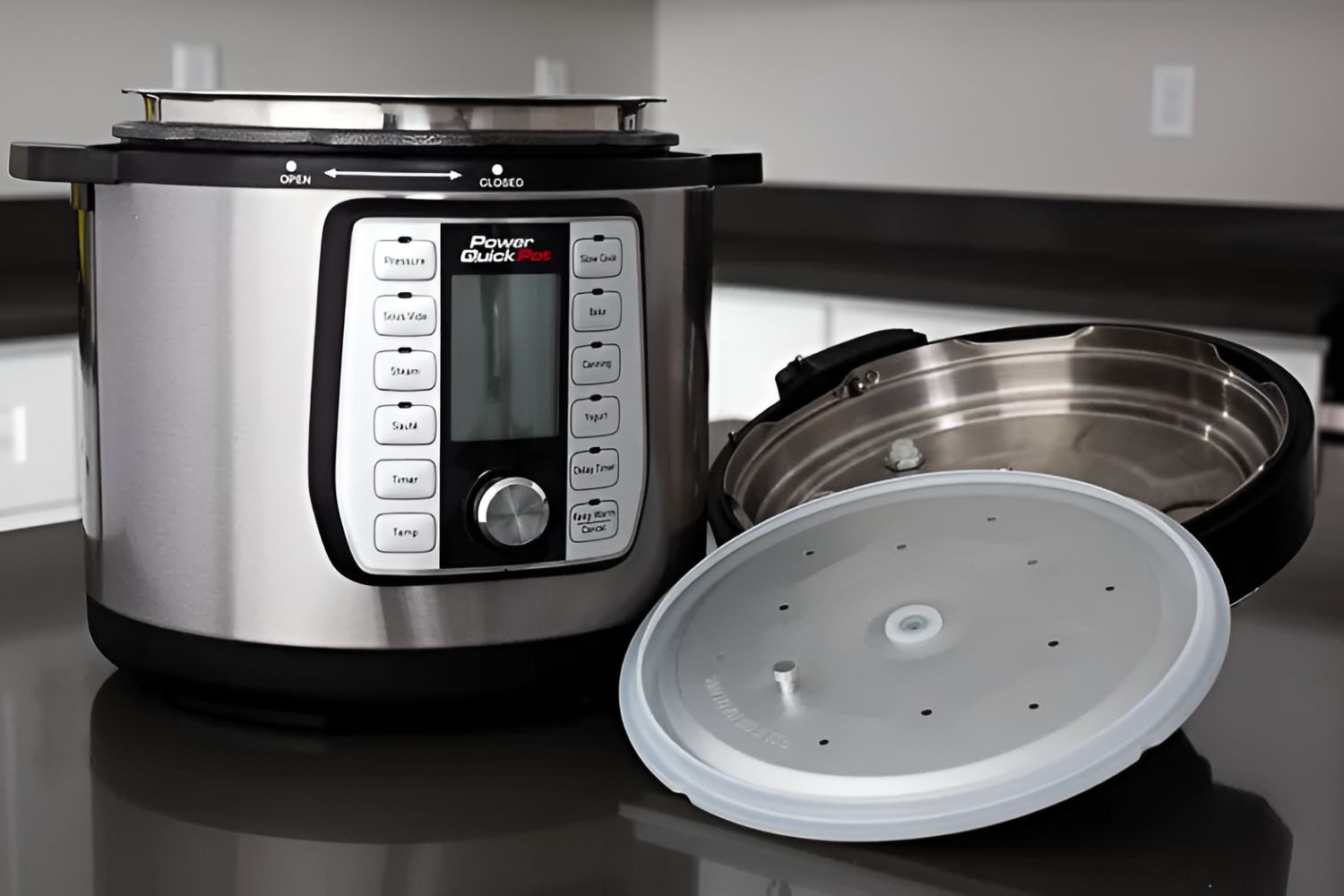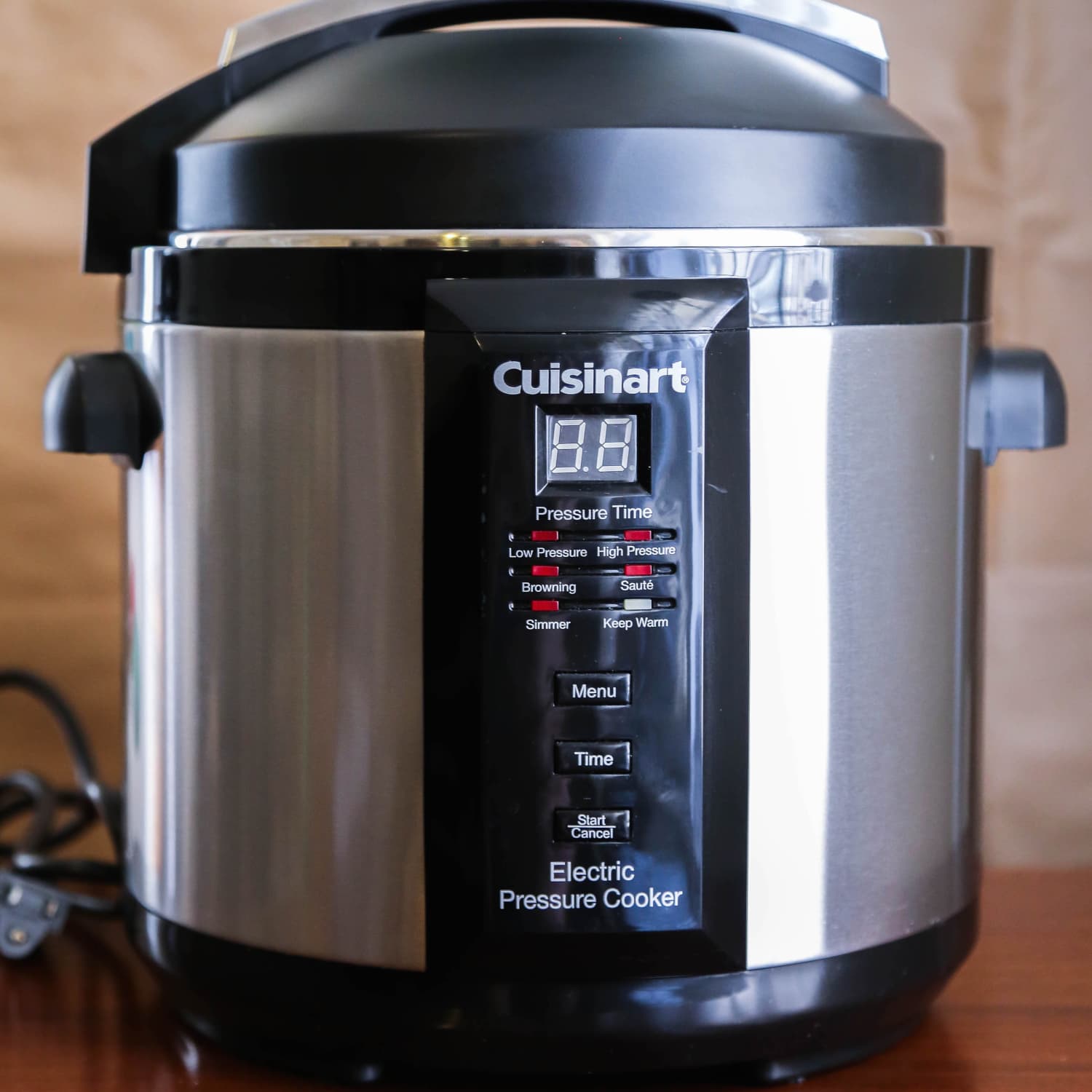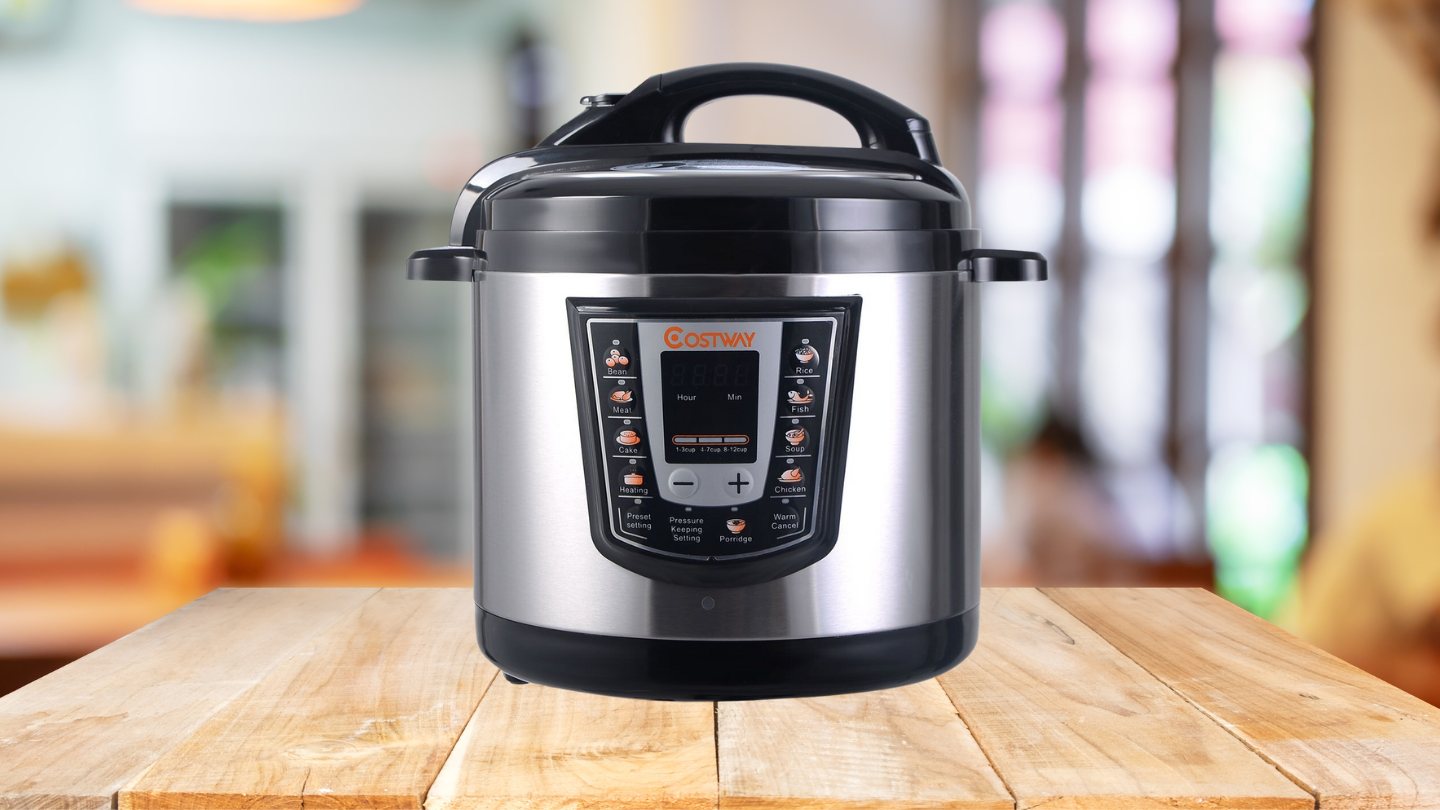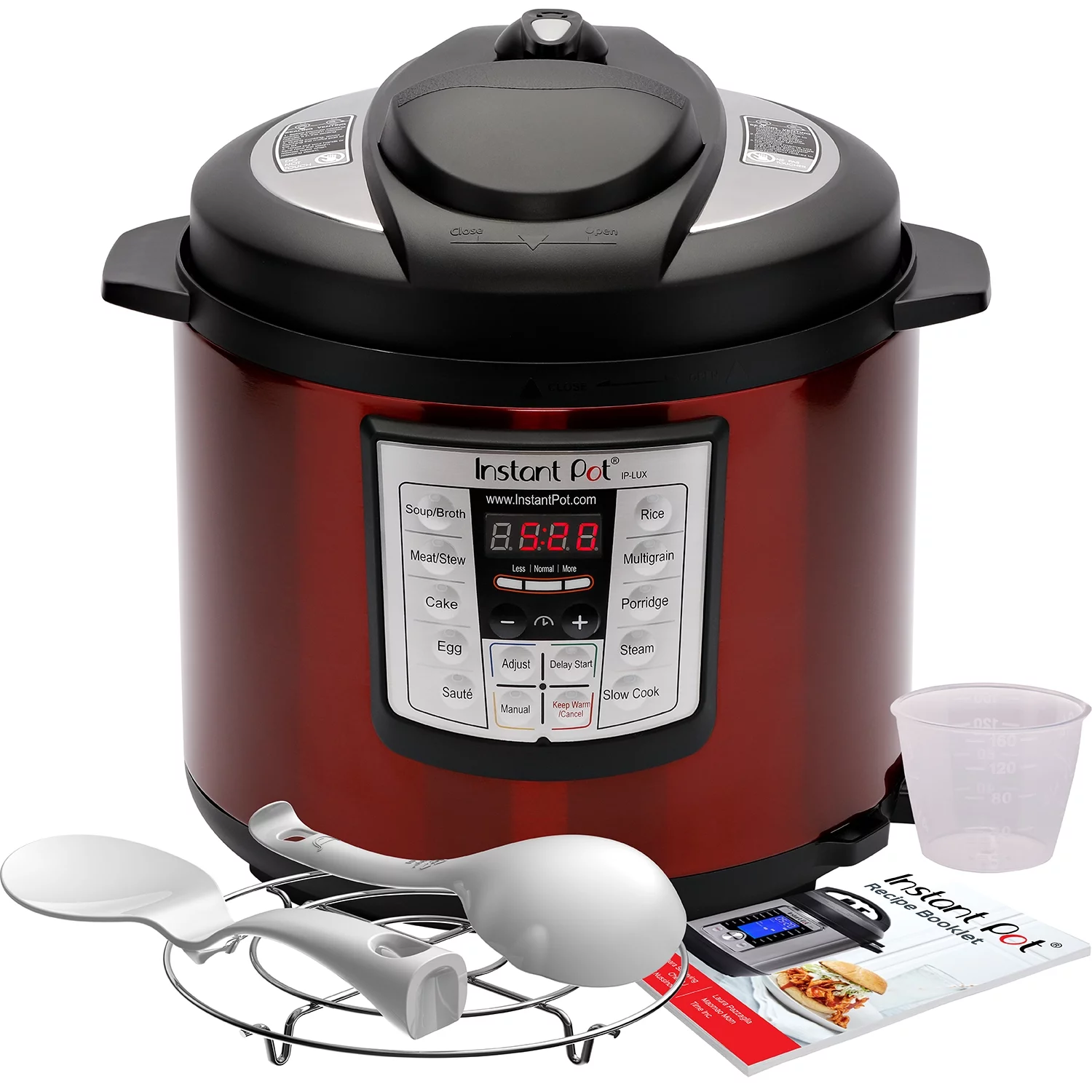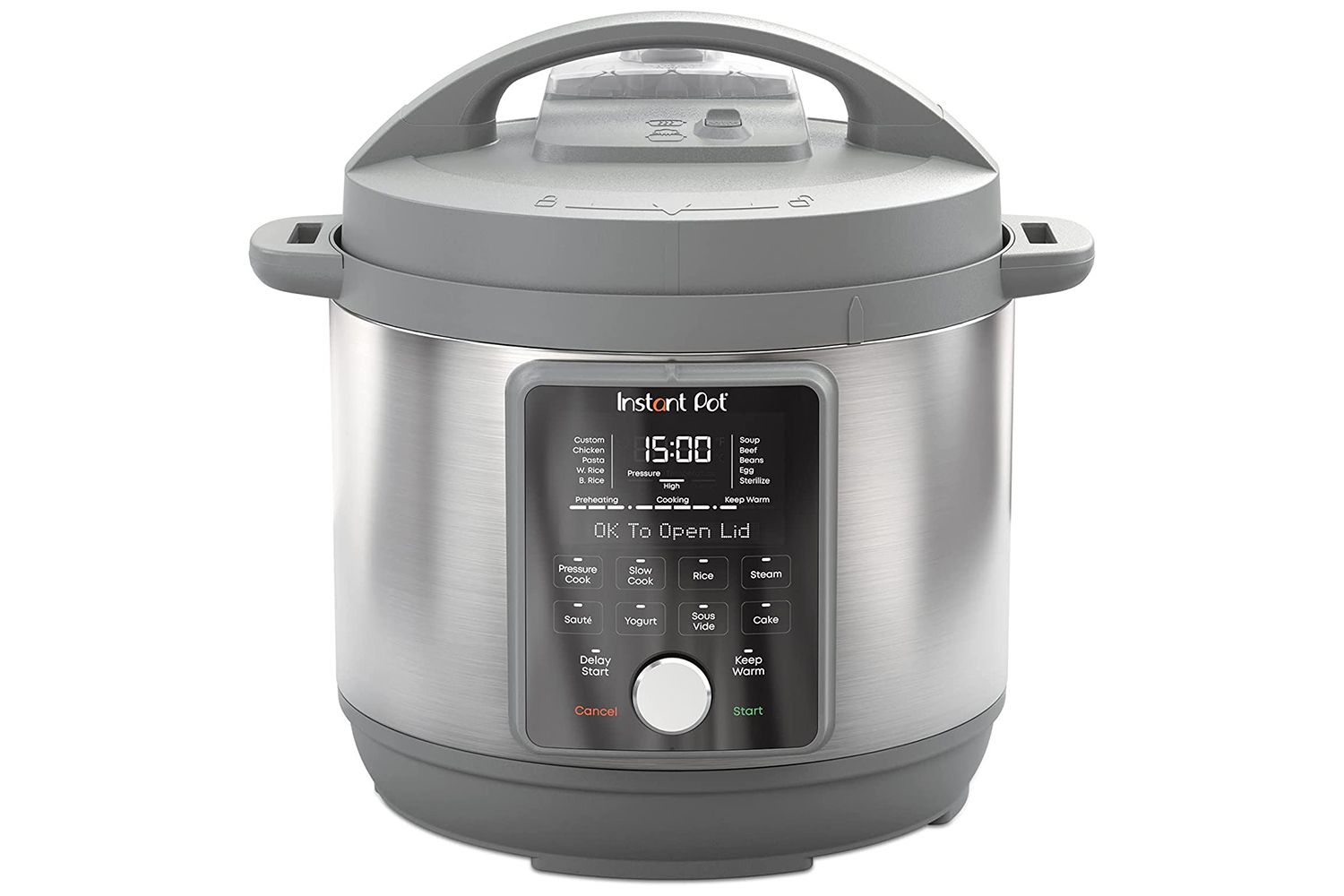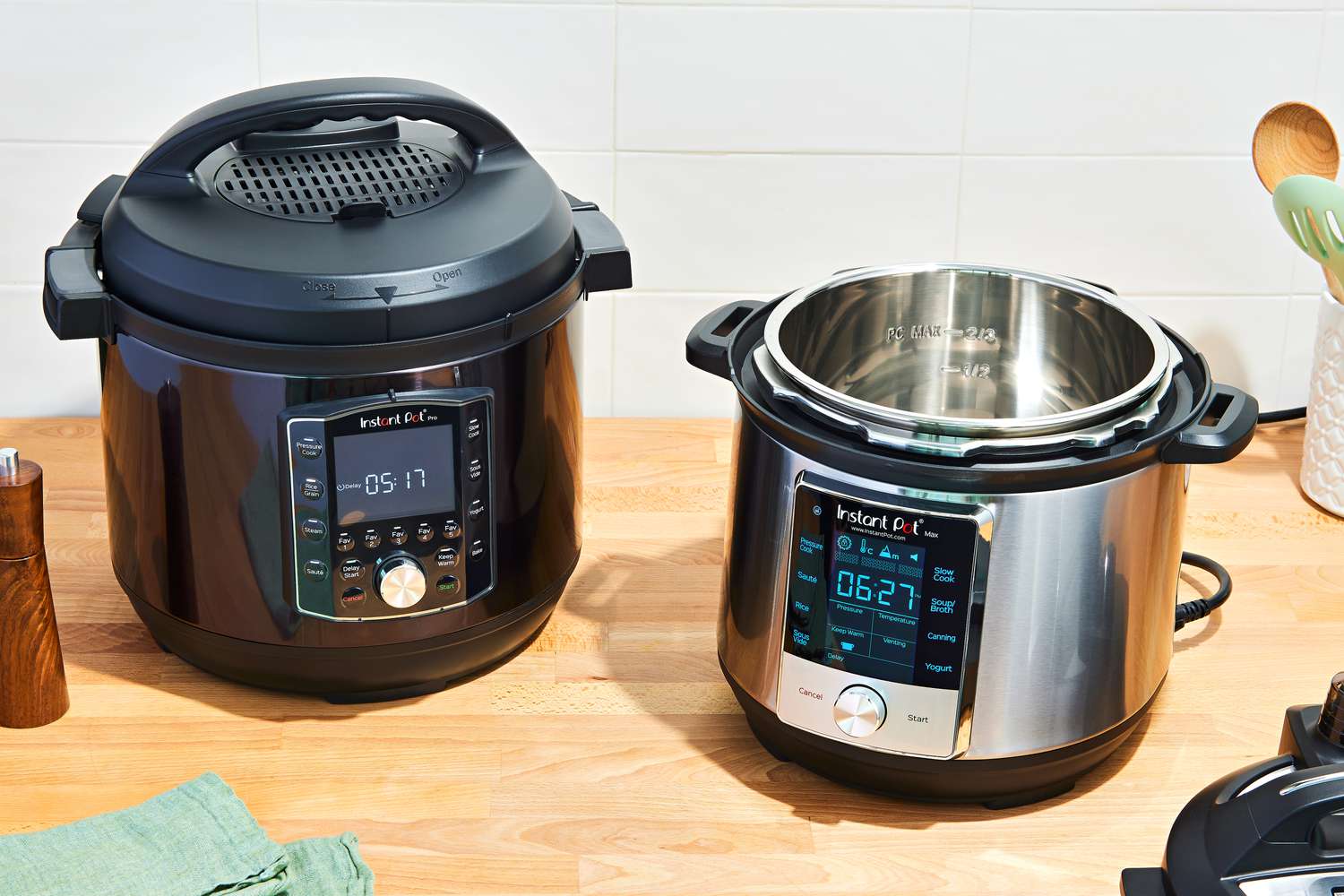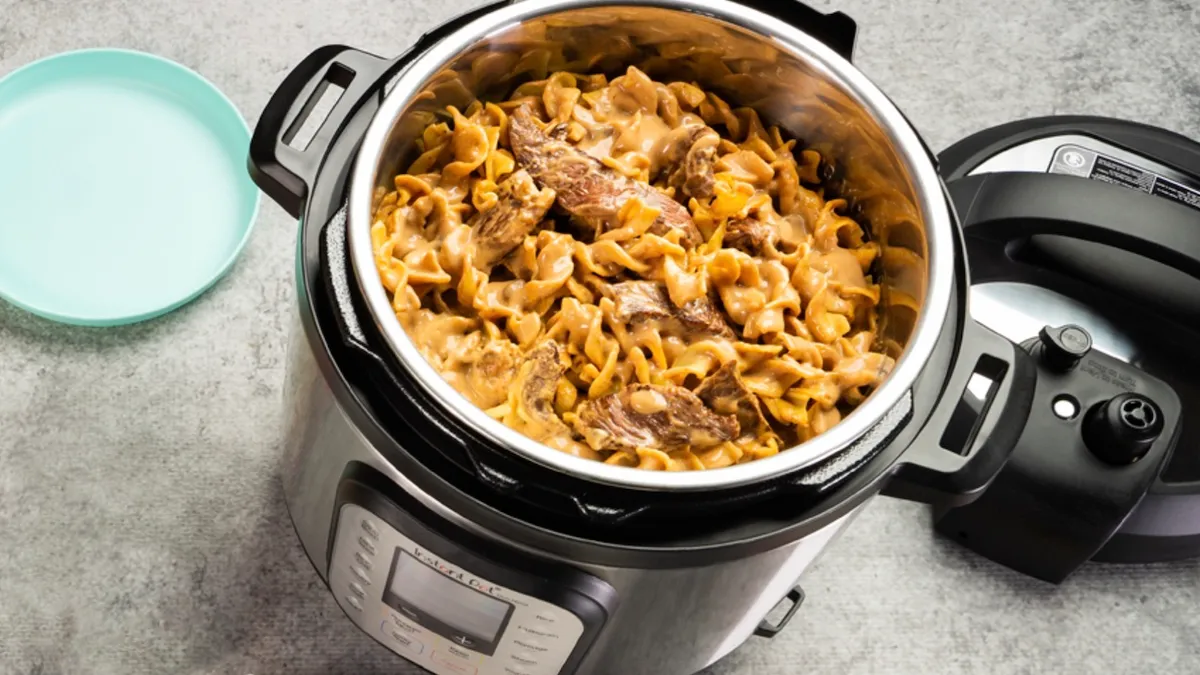Introduction
Welcome to the world of electric pressure cookers, where convenience and efficiency come together to revolutionize cooking. If you’re wondering how many watts an electric pressure cooker uses, you’ve come to the right place. In this article, we’ll dive into the intricacies of electric pressure cookers, explore their functioning, and shed light on the average wattage usage.
Electric pressure cookers have gained immense popularity in recent years, and for good reason. These versatile kitchen appliances offer a faster and hassle-free cooking experience, allowing you to prepare delicious meals in a fraction of the time compared to traditional cooking methods. Whether you’re a busy professional, a parent juggling multiple responsibilities, or simply someone looking to simplify meal preparation, an electric pressure cooker can become your culinary ally.
Before we delve into the watts of these modern marvels, let’s discuss briefly what an electric pressure cooker is and how it works. Understanding the basic principles and mechanics will help us comprehend its energy usage better.
What is an Electric Pressure Cooker?
An electric pressure cooker is a kitchen appliance that combines the functions of a pressure cooker, slow cooker, rice cooker, and more into a single, compact device. It harnesses the power of steam and pressure to cook food quickly and efficiently.
Unlike traditional stovetop pressure cookers that require constant monitoring and adjustment of heat, electric pressure cookers are designed with built-in sensors and control systems. This means you can set the cooking time and temperature, and the appliance will handle the rest.
Electric pressure cookers consist of a sealed pot with a locking lid and a control panel that allows you to select different cooking modes, adjust pressure levels, and set cooking times. The pot is typically made of stainless steel or non-stick material and often comes with volume markings for easy measurement.
The science behind electric pressure cookers lies in their ability to create a sealed, airtight environment that increases the boiling point of water. As the liquid inside the pot heats up, steam builds up pressure, which in turn cooks the food faster. This accelerated cooking process not only saves time but also helps to retain flavors and nutrients.
Electric pressure cookers are equipped with safety features, such as pressure release valves, automatic shut-off systems, and lid locks, to ensure safe operation. They also offer a range of cooking presets for different types of food, making it easier for users to achieve optimal results with less guesswork.
In recent years, electric pressure cookers have become increasingly advanced, with innovative features like delay start timers, keep-warm functions, and multiple pressure settings. These additions further enhance the convenience and versatility of these appliances.
Now that we have a better understanding of what electric pressure cookers are and how they work, let’s explore the topic of watts and electricity usage in these appliances.
How Does an Electric Pressure Cooker Work?
Electric pressure cookers utilize a combination of heat, steam, and pressure to cook food quickly and efficiently. The key components that enable their functionality include the heating element, the pressure release valve, and the control panel.
When you turn on an electric pressure cooker and select your desired cooking mode, the heating element begins to generate heat, which is transferred to the pot. The heat causes the liquid inside the pot to reach boiling point and form steam. As more steam is produced, the pressure inside the cooker starts to rise.
As the pressure builds up, the pressure release valve, located on the lid, remains closed to trap the steam inside. This sealed environment, combined with the increased pressure, increases the boiling point of the liquid. The higher boiling point allows the food to cook faster and more efficiently.
The control panel on an electric pressure cooker provides you with the ability to set the desired cooking time and pressure level. Once you input your preferences, the cooker’s sensors and microprocessor take over. They monitor and regulate the heat, pressure, and cooking time to ensure precise and consistent results.
Many electric pressure cookers come with pre-programmed cooking presets for common dishes like rice, soup, or stew. These presets automatically adjust the temperature and pressure settings to optimize the cooking process for each specific recipe.
One of the primary advantages of electric pressure cookers is their ability to perform slow cooking as well. By selecting the “slow cook” mode, users can prepare tender and flavorsome meals by cooking food at a lower temperature over an extended period of time.
While electric pressure cookers excel at rapidly cooking food, they also offer the convenience of a keep-warm function. This feature allows you to keep your meal warm after it has finished cooking, making it ideal for those times when you may not be ready to serve immediately.
In summary, electric pressure cookers harness the power of heat, steam, and pressure to cook food quickly and efficiently. By utilizing the sealing and pressurizing capabilities, along with precise temperature control, these appliances make cooking easier, faster, and more convenient.
Understanding Watts
Before we dive into the wattage usage of electric pressure cookers, let’s take a moment to understand what watts actually measure. Watts, abbreviated as “W,” are units of power that measure the rate at which energy is consumed or produced.
When it comes to electric appliances, the wattage rating indicates the amount of electrical power the device consumes to perform its function. In simpler terms, it measures how much electricity an appliance uses per unit of time.
It’s important to note that wattage alone does not determine the efficiency or effectiveness of an appliance. Higher wattage does not necessarily mean better performance. Different appliances have different power requirements based on their design, function, and features.
The wattage of an electric pressure cooker indicates the power it consumes while in operation. This power is utilized for heating the cooking chamber, generating steam, and maintaining pressure throughout the cooking process.
Understanding the wattage of an electric pressure cooker becomes relevant when considering energy consumption and the impact it may have on your electricity bill. By having an idea of the wattage, you can estimate the electricity costs associated with using the appliance regularly.
Additionally, understanding the wattage of an electric pressure cooker can also help you determine if your kitchen’s electrical circuit can handle the appliance. Some high-powered models may require a dedicated circuit with higher amp rating to function optimally.
The wattage of an electric pressure cooker is typically mentioned in the product specifications or user manual. It is usually in the range of 800 to 1500 watts, with larger and more powerful models having higher wattage ratings.
Keep in mind that the wattage stated is the maximum power the appliance can draw. In most cases, during the cooking process, the cooker will not continuously consume the maximum wattage. The power consumption varies depending on the selected cooking mode, temperature setting, and the amount of time the cooker is actively heating.
Now that we have a basic understanding of watts and their relevance, let’s explore the average wattage usage of electric pressure cookers in the next section.
Average Wattage of Electric Pressure Cookers
The average wattage of electric pressure cookers typically ranges from 800 to 1500 watts, with some models even reaching higher wattages. However, it’s essential to note that the actual wattage usage can vary depending on various factors, including the cooking mode, temperature setting, and duration of use.
Most electric pressure cookers have multiple cooking modes, such as pressure cooking, slow cooking, sautéing, and steaming. Each mode may have different energy requirements, resulting in varying wattage usage. For example, pressure cooking mode may consume more power initially to generate steam and build pressure, while slow cooking mode may require less power over an extended period.
The wattage listed for an electric pressure cooker indicates the maximum power consumption during its operation. However, it’s important to note that the appliance won’t continuously draw the maximum wattage throughout the entire cooking process. The power usage will fluctuate based on the specific cooking settings and the stage of the cooking cycle.
For instance, when an electric pressure cooker reaches the desired pressure, it may require less power to maintain that pressure. Similarly, once the cooking is complete, the cooker may switch to a lower power mode or enter a keep-warm function that consumes less energy.
While the wattage of an electric pressure cooker provides some insight into its power consumption, it’s essential to consider that these appliances are designed to be energy-efficient. The combination of rapid cooking times and sealed cooking chambers helps to minimize energy waste.
If you’re concerned about energy usage, you can choose electric pressure cookers with adjustable wattage settings or energy-saving features. Some models allow you to select lower power modes for gentler cooking or offer eco-friendly settings to reduce energy consumption.
It’s worth mentioning that using an electric pressure cooker can still be more energy-efficient compared to traditional cooking methods. The shorter cooking times and the ability to cook multiple items in one pot contribute to overall energy savings.
Understanding the average wattage of electric pressure cookers provides valuable insight into their energy consumption. By selecting a model with the appropriate wattage and utilizing energy-saving features, you can make the most efficient use of your electric pressure cooker while enjoying the benefits of quick and convenient cooking.
Factors that Affect Wattage Usage
The wattage usage of an electric pressure cooker can vary based on several factors. Understanding these factors can help you optimize energy efficiency and make informed decisions regarding usage.
1. Cooking Mode: Different cooking modes of an electric pressure cooker consume varying amounts of power. For example, pressure cooking mode, which requires higher heat and pressure, may use more wattage compared to slow cooking mode.
2. Temperature Settings: The wattage usage can also be influenced by the temperature setting selected for cooking. Higher temperature settings may require more power to achieve and maintain the desired temperature.
3. Cooking Time: The duration for which an electric pressure cooker is in use affects the overall wattage usage. Longer cooking times will result in higher energy consumption, whereas shorter cooking times can help reduce electricity usage.
4. Food Quantity: The amount of food being cooked in the electric pressure cooker can also impact the wattage usage. Cooking larger quantities of food may require more power to generate and maintain the desired pressure or temperature.
5. Appliance Efficiency: The efficiency of the electric pressure cooker itself plays a role in wattage consumption. A well-designed and energy-efficient cooker will utilize power more effectively, resulting in lower overall wattage usage.
6. Power Management Features: Some electric pressure cookers come with power management features that can help reduce wattage usage. These features include programmable timers, energy-saving modes, or automatic shut-off systems that minimize energy consumption when not in use.
7. External Influences: External factors, such as the voltage of your electrical supply and fluctuations in power, can also affect the wattage usage of your electric pressure cooker. It’s essential to ensure a stable electrical supply to maintain consistent power consumption.
It’s important to consider these factors when using an electric pressure cooker to make energy-efficient choices. By understanding how these variables affect wattage usage, you can adjust settings, optimize cooking times, and make informed decisions about your energy consumption.
Saving Energy While Using an Electric Pressure Cooker
Electric pressure cookers are already considered energy-efficient appliances due to their ability to cook food quickly and retain heat effectively. However, there are additional steps you can take to maximize energy savings while using your electric pressure cooker.
1. Use the Correct Pot Size: Using a pot that matches the quantity of food being cooked helps minimize energy waste. Using a larger pot for smaller portions can result in more heat loss, requiring the appliance to work harder and consume more energy.
2. Optimize Preheating: Unlike traditional stovetop pressure cookers, electric pressure cookers do not require preheating. Skipping the preheating step will save both time and energy usage.
3. Utilize Energy-Saving Features: Many electric pressure cookers come equipped with energy-saving features, such as eco-mode or low-power settings. Take advantage of these options when appropriate to reduce wattage usage.
4. Plan Sequential Cooking: When possible, plan your cooking sessions by preparing multiple dishes in succession. The residual heat generated from the previous cooking cycle can be used to start the next cooking cycle, saving energy in the process.
5. Use Natural Release: Instead of using the quick-release valve, opt for the natural release method whenever it’s suitable for the recipe. Allowing the pressure to decrease naturally will conserve energy by reducing the need for additional heat and power usage.
6. Minimize Lid Opening: Avoid opening the lid of the electric pressure cooker unnecessarily during the cooking process. Each time the lid is opened, heat and pressure escape, requiring more energy to bring the cooker back to the desired temperature and pressure.
7. Cook in Batches: If you have multiple dishes to cook, consider batch cooking. This allows you to take advantage of the residual heat in the electric pressure cooker and reduce the overall cooking time and energy consumption.
8. Plan Thawed Ingredients: Thawing ingredients before cooking can help reduce the time required to reach cooking temperatures, saving energy. Avoid adding frozen ingredients directly into the cooker, as it takes more energy to bring them to the desired temperature.
By implementing these energy-saving practices while using your electric pressure cooker, you can further enhance its efficiency and reduce overall energy consumption. Not only will you save on electricity costs, but you will also make a positive impact on the environment.
Benefits of Using an Electric Pressure Cooker
Using an electric pressure cooker offers a multitude of benefits that make it an indispensable tool in the kitchen. Let’s explore some of the advantages of incorporating this versatile appliance into your cooking routine.
1. Time-Saving: Electric pressure cookers excel at reducing cooking times significantly compared to traditional cooking methods. The combination of high pressure and steam allows for faster cooking, meaning you can prepare meals in a fraction of the time it would take using other appliances.
2. Energy Efficiency: Electric pressure cookers are designed to be energy-efficient, utilizing less energy compared to most conventional cooking methods. By trapping heat and steam within the sealed cooking chamber, they minimize heat loss and require less power to achieve desired cooking results.
3. Retains Nutritional Value: The shorter cooking times in electric pressure cookers help retain the nutritional value of food. The sealed environment prevents nutrient loss during cooking, and the rapid cooking process preserves vitamins and minerals that can be diminished by longer cooking times.
4. Versatile Cooking Options: Electric pressure cookers offer a wide range of cooking functions and presets, making them versatile kitchen companions. Aside from pressure cooking, they can also be used for slow cooking, steaming, sautéing, and even baking. This versatility allows for more creative and diverse culinary exploration.
5. Consistent Results: With precise temperature and pressure control, electric pressure cookers ensure consistent results every time. Whether you’re cooking grains, meats, vegetables, or soups, the cooker’s intelligent sensors and microprocessors regulate the cooking process, resulting in perfectly cooked dishes.
6. Enhanced Flavor and Texture: The high pressure and steam created in an electric pressure cooker help infuse flavors deeply into the food. This process intensifies the taste and aroma of the dishes, ensuring delicious and flavorful meals. Additionally, the moist cooking environment helps to tenderize meats and create incredibly tender and juicy results.
7. Easy and Safe Operation: Electric pressure cookers are designed with user-friendly controls and safety features that make them easy and safe to operate. Most models have digital displays and intuitive buttons for selecting cooking settings, and they incorporate lid locks and pressure release valves to prevent accidents and ensure safe cooking.
8. Stellar Kitchen Assistant: An electric pressure cooker simplifies meal preparation by taking on multiple cooking tasks. It can replace several kitchen appliances, such as slow cookers, rice cookers, and steamers, saving space in your kitchen and streamlining your cooking routine.
By harnessing the benefits of an electric pressure cooker, you can save time, energy, and effort in the kitchen while enjoying delicious, nutritious meals with consistent results. It is a must-have appliance for anyone seeking convenience, efficiency, and culinary excellence.
Conclusion
In today’s fast-paced world, where time is of the essence, electric pressure cookers have emerged as a game-changer in the kitchen. These versatile appliances offer numerous benefits, including time savings, energy efficiency, and consistent cooking results.
By understanding the wattage usage and factors that affect it, you can make informed decisions about energy consumption and optimize the efficiency of your electric pressure cooker. Additionally, implementing energy-saving practices can further enhance the eco-friendliness of your cooking process.
Electric pressure cookers provide a convenient and reliable way to prepare meals, thanks to their versatile cooking options and user-friendly controls. From tenderizing meats to cooking perfect grains and vegetables, these appliances ensure consistent results with enhanced flavors and textures.
Beyond their culinary benefits, electric pressure cookers offer practical advantages as well. They save space by replacing multiple kitchen gadgets and provide a safe and easy cooking experience with built-in safety features.
Whether you are a busy professional, a parent looking to simplify meal preparation, or an avid home cook seeking efficient cooking solutions, an electric pressure cooker is an invaluable tool to have in your kitchen.
So, embrace the world of electric pressure cookers and experience the joy of preparing delicious, healthy meals in a fraction of the time. With their time-saving benefits, energy efficiency, and versatility, these appliances are sure to elevate your cooking game and make your culinary adventures more enjoyable.







